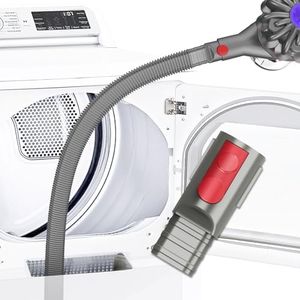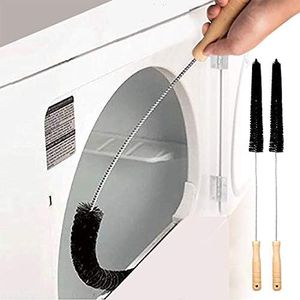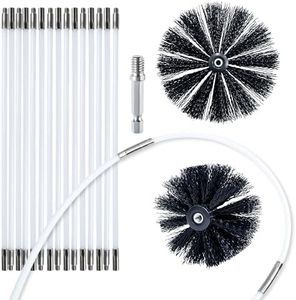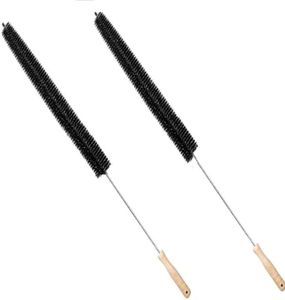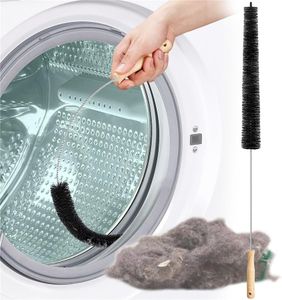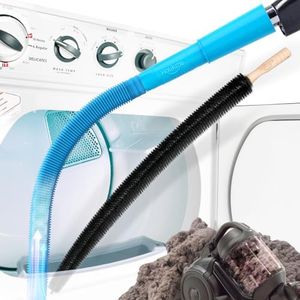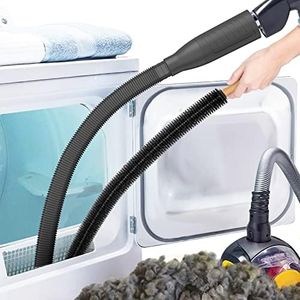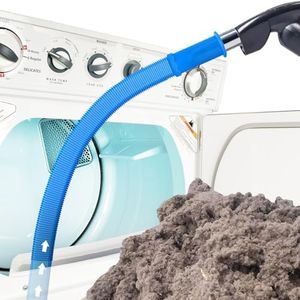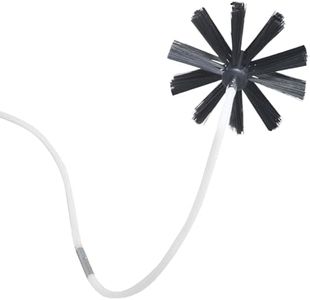We Use CookiesWe use cookies to enhance the security, performance,
functionality and for analytical and promotional activities. By continuing to browse this site you
are agreeing to our privacy policy
10 Best Dryer Vent Cleaning Kits
From leading brands and best sellers available on the web.Buying Guide for the Best Dryer Vent Cleaning Kits
Choosing the right dryer vent cleaning kit is essential for maintaining your dryer's efficiency and reducing the risk of fire caused by lint buildup. A good kit helps you remove lint and debris from both the vent and the ducts, leading to better airflow and energy savings. The right fit depends on your vent's length, layout, and the type of connections you have. Focus on practical features and ease of use to make this regular maintenance task safe and effective.Rod LengthRod length refers to the total length that the cleaning rods can reach when connected together. This is important because your kit needs to reach the entire length of your dryer vent duct, which could range from just a few feet to 20 feet or more in some homes. Kits with shorter rods (6-10 feet) are suitable for compact setups or portable dryers, while kits with longer rods (20 feet and above) suit larger homes with long or hard-to-reach vents. You should measure your vent duct before buying and choose a kit that can reach the exit point without straining or adding instability.
Brush Head Type and SizeThe brush head is the part that collects and brushes out the lint. Its type and size determine how effectively it can clean your vent. Some brushes are round with stiff bristles for tough debris, while others are more flexible for narrow or angled ducts. If your vent is wider, a larger brush head (4 inches or more) is useful, while narrower or more intricate vents may need a smaller, more pliable brush (2-3 inches). Choose the size and stiffness based on your duct configuration and material; metal ducts tolerate firmer brushes, while plastic may require softer bristles to prevent damage.
Rod Flexibility and Connection SystemRod flexibility determines how well the cleaning kit can navigate turns, bends, or elbows in your vent system. Rigid rods might offer more force but can struggle with corners, while flexible rods are better for complex vent paths. The connection system (screw, click, or snap-on) also impacts ease of assembly, time taken, and how securely the kit holds together while in use. Pick a kit with enough flexibility for your vent's path and a secure connection method that feels effortless for you to handle.
Drill CompatibilitySome cleaning kits can be attached to a power drill to spin the brush head, making cleaning much quicker and more thorough. Drill-compatible kits usually come with adaptors and are ideal for users who want to save effort or deal with especially stubborn lint. However, if you don't own a drill or prefer manual control, a kit without drill compatibility is simpler and effective for lighter, regular maintenance. Think about your physical abilities, the frequency you'll clean, and your tool availability before deciding.
Ease of Cleaning and StorageEase of cleaning and storage refers to how simple it is to clean the kit after use and how compactly it can be stored. Removable and washable brush heads save you from repeatedly buying new ones, while kits that disassemble into small pieces or come with a storage bag fit conveniently in limited spaces. If you want a low-maintenance cleaning tool or have little storage room, pay attention to how the kit comes apart and how easy it is to rinse or clean after each use.
